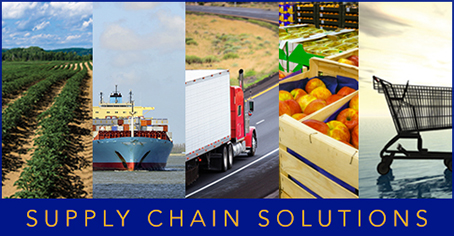Ultimately, sourcing adjustments need to make financial sense. The cost of spot market purchases plus the additional freight cost from distant suppliers must be weighed against price sensitivity in the market.
“If I’m bringing peppers in from California at $19 and it costs me $7 a case to get them here, I’m sitting on inventory at $26 cost,” notes Cessna. “Can I sell it and get the kind of market dollars I need to make a profit? That’s an every-hour dialogue with us.”
Adjusting to Demand Shifts
Demand for produce commodities is driven by product quality and price. The variability of both factors, compared to other industries, can cause rapid demand fluctuations. The ability to flex inventory levels and capacity with demand avoids inventory shortages in rising markets and waste in declining markets.
“Some customers send out POs [purchase orders] weeks in advance but they also make changes along the way,” notes Steve Roosdahl, executive supply chain director for Oppy, a full-service produce marketing and distribution company. “We had one customer that sent daily POs at two in the morning for shipping at 10 a.m.”
To meet base demand and last-minute requests, the company must anticipate the needed quantity, quality specifications, and packaging requirements. Most of the product is packed the day before shipping but last-minute order additions or subtractions must be handled with flexible fulfillment processes.
“You can have anywhere from 20 to 60 percent of POs changing the same day (as shipping),” states Roosdahl. These last-minute changes may then create a need for additional product or reduced quantity.
Available product is pulled, staged, and prepared for delivery. If inbound loads contain product needed for a PO, it must be quickly unloaded and checked for quality, reconditioned if needed, and packaged. An expedited work order is needed to get the truck loaded and dispatched with minimal delay.
“Every day is a juggling act—and you plan out your day as best you can,” Roosdahl concludes.
Ensuring Transportation Capacity
The variability challenges in the fresh produce industry are not limited to pro-duct issues. A produce company’s ability to move product across the supply chain at reasonable expense is impacted by capacity conditions. Sometimes, demand far exceeds transportation capacity, causing equipment shortages and rate spikes. Other times, there is excess transportation capacity and rates plummet.
Produce companies must monitor the transportation market, recognize changing conditions, and adapt accordingly. Contracting with a set of primary transportation providers is one strategy for ensuring base capacity at a reasonable cost for peak periods. Flexible capacity for variable demand and unexpected loads can be sourced through transportation brokers. However, this tactic can generate risks of not finding capacity when needed and incurring higher rates.



